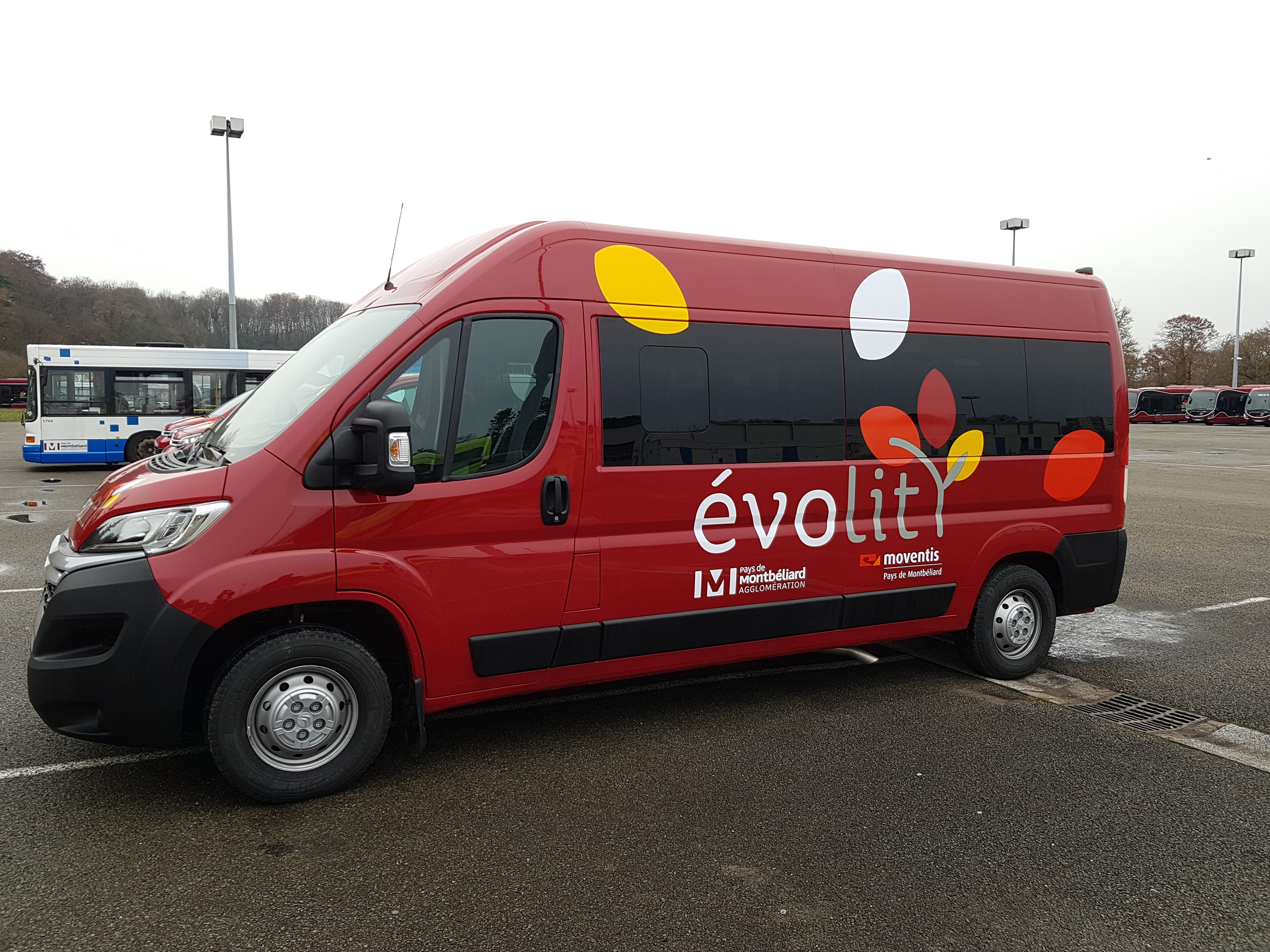


Shotl enables accessible transport in France

Pays de Montbéliard is a French urban area located near the Swiss border. With an average population density, it is very well connected to important nearby cities like Basel in Switzerland, Freiburg in Germany, and Strasbourg in France. The urban area, Pays de Montbéliard Agglomération (PMA), has almost 140,000 inhabitants and includes 72 different municipalities. It is also an important industrial center and a leader in the automotive sector.
Back in 2018, in cooperation with regional public transport operator Moventis, Shotl carried out a pilot test for accessible on-demand transport that could complement traditional fixed-route-and-schedule buses. The project was also designed to provide sufficient insights to allow us to develop our mobility platform to also cover the needs of people with reduced mobility (PRMs).
Scheduling complex accessible transport requests while also respecting pick-up and drop-off times is extremely challenging for bus operators. If necessary, many users can fall back on alternative transit modes, but PRMs do not always have that luxury. Montbéliard was, therefore, just one of many cities in urgent need of more efficient and affordable accessible transport solutions.
Even though the local authority had set up a demand-responsive accessible bus service, this fell short of true on-demand as users had to call in advance to book rides, which had to be scheduled manually. The challenge for Shotl was to modernize the system and successfully bring smart city technology and mobility to the region. The result is ADAPTIVE, the white-label app developed by Shotl for the exclusive use of citizens registered with the Montbéliard PRM service.

At the end of 2021, Shotl started to integrate all transport requests into its mobility platform, and tablets for drivers were activated. Both systems ran in parallel for several weeks to make sure the needs of PRM users were met.
We adapted our on-demand solution to PRM transport, configuring door-to-door service for maximum user comfort and convenience. In contrast to other transit users, for PRMs, respecting pick-up and drop-off times often takes precedence over travel time, so we designed an algorithm capable of balancing these needs. We also enabled bulk pre-programming of repeat scheduled rides, which saves time and improves efficiency for the operator and ensures a more reliable service for passengers.
This project proves digital solutions can be applied to any form of mobility. Now, all 72 communes of PMA are covered by just 2 vehicles. Users can request a ride from Monday to Saturday from 8 a.m. to 7 p.m., and on Sundays from 2 p.m. to 8 p.m., for any location in the 470 km2 area of operations, which includes 2 specific stops at the local hospital and the TGV high-speed train station.
Popular posts
28.10.19
Driving to distraction – are smartphones the new drink-driving?
A distracted driver is a dangerous driver, and cellphone use at the wheel is a modern disease that’s on the rise globally.
Gerard Martret
26.03.24
Future Mobility: Shotl at Intertraffic & AIMAS 2024
As April approaches, the anticipation is building for two significant events that promise to shape the future of transportation: Intertraffic & AIMAS 2024.
Sílvia Coronado
26.10.20
On-demand buses help recover confidence in public transport
A new study shows how post-pandemic recovery of public transportation ridership is much faster when supported by demand-responsive vehicles, compared to results of occupancy provided by regular bus lines in the same location.


